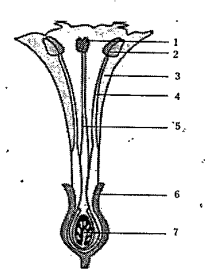Label parts 1 to 4
 Solution in Marathi
Solution in Marathi
Step by step video & image solution for Label parts 1 to 4 by Biology experts to help you in doubts & scoring excellent marks in Class 10 exams.
Updated on:21/07/2023Topper's Solved these Questions
Similar Questions
How many biodiversity spots are reported all over the World?
View SolutionMilk is _______ at the beginning to destroy unwanted microbes.
View Solution(a) Identify the following figure
(b) Label the parts marked 1 to 4.
View SolutionIn the adjacent figure of a typical dicot embryo, label the parts (1),(2) and (3) . State the function of each of the labelled part.

View SolutionLabel is the parts (1) and (2) in budding of yeast cell.

View SolutionDescribe the structure of T4 phage.
View SolutionDraw a Tunicated bulb and label any 4 parts.
View SolutionLabel the parts for given diagram and write functions of labelled parts 1,2,6 and 7.

View SolutionIn the given figure label the parts numbered 1 to 6.

View SolutionLabel parts 1 to 4

View SolutionWrite the functions of parts 1 and 4. Label the parts 2 and 3 in the following figure showing a synapse.

View SolutionIn the adjacent figure of a typical dicot embryo, label the parts (1),(2) and (3) . State the function of each of the labelled part.
View SolutionThe given diagram is an outline of human body showing the posttion of certain organs. In this diagram (I) Name the parts labelled 1-5. (ii) Name the hormone released from 1 that influences the working of part 2. (iil) How do part labelled as 3 differs from parts labelled as 1 and 2 in general? Name the endocrine cells present in part 3. (iv) What will happen if the part labelled as 4 is removed ? (11) Name the hormones released by part 5. (VI) Why the part labelled as 1 called master gland? Which part of the forebrain controls the gland labelled 1 ? (vii) Name the gland that secretes 'emergency hormone.
View SolutionStudy the diagram and answer the questions that follow :

Label the parts 1 - 4.
View SolutionStudy the diagram and answer the questions that follow : Label the parts 1 - 4.
View Solution
